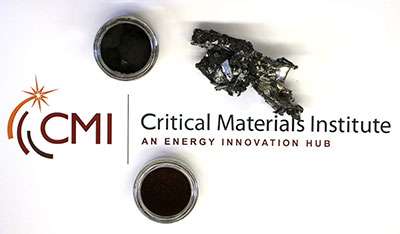New acid-free magnet recycling process

A new rare-earth magnet recycling process developed by researchers at the Critical Materials Institute (CMI) dissolves magnets in an acid-free solution and recovers high purity rare earth elements. For shredded magnet-containing electronic wastes, the process does not require pre-processing such as pre-sorting or demagnetization of the electronic waste.
Rare earths are vital to many technologies and are critical ingredients in the world's strongest magnets, but they are subject to supply shortages. Recycling is a possible solution to the supply-chain problems, but until now has faced serious economic and ecological challenges. CMI, a U.S. Department of Energy Innovation Hub led by Ames Laboratory, was able to overcome several hurdles to the environmental viability of rare-earth recycling with this processing technology, according to lead researcher Ikenna Nlebedim.
"The difficulty with traditional hydrometallurgical methods for rare-earth magnet recycling is that they rely on the use of hazardous mineral acids, and this presents a number of problems from an economic and environmental standpoint," said Nlebedim. "It produces toxic fumes; the acids need to be contained, and so do acid-contaminated wastes."
The new process has been applied to waste magnet materials obtained from U.S. magnet processing plants. "The technology is remarkably selective in recovering rare-earth elements even from chunks of magnet-containing shredded electronic wastes," said Nlebedim. In shredded computer hard drives for example, rare earth elements were selectively removed from the e-waste without the need to pre-sort or pre-concentrate the magnet content of the materials, further reducing steps and costs.
The result is recovered rare-earth oxides of high purity, without the production of fumes or use of hazardous mineral acids. The process has been adapted for the recovery of rare earth elements from both Nd-Fe-B (Neodymium-Iron-Boron) and Sm-Co (Samarium-Cobalt) magnets.
Other valuable by-products of e-waste components can be recovered for further recycling including copper, chromium, nickel and other metals or their composites.
"Available rare earth elements recovery methods are rarely profitable" said postdoctoral researcher Denis Prodius. "This method not only recovers high-purity rare earths, it also recovers other marketable materials. The by-products pay for chemicals used in the recycling process."
Provided by Ames Laboratory



















